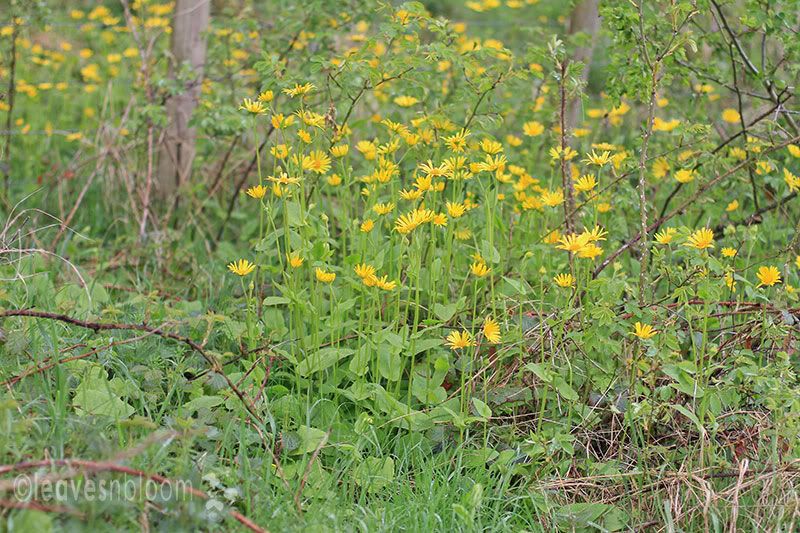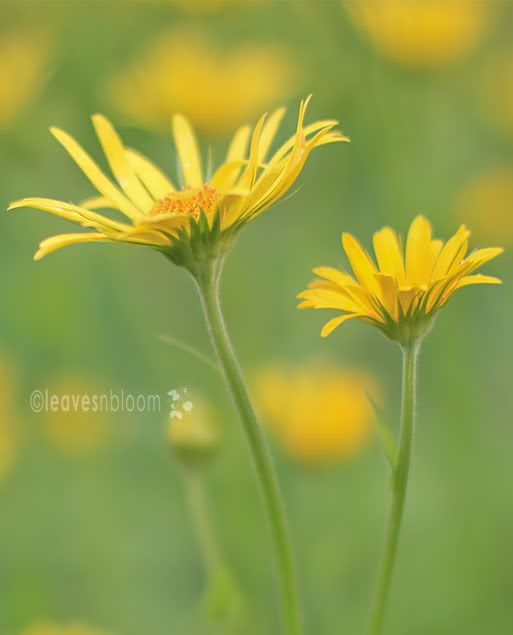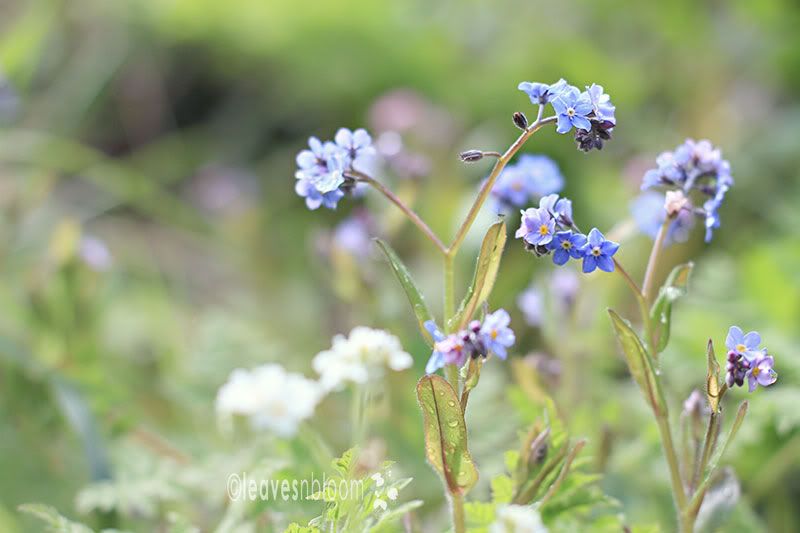This WordPress blog is not public.
Have you ever found patches of yellow daisies Doronicum pardalianches while out walking in the Scottish countryside?
Be prepared is the Perthshire motto just now as we equip ourselves with waterproofs, wellingtons and umbrellas to protect from the worst of April’s daily deluges. Gone is the suncream, the smell of barbeques in the air, the blue skies and sunshine from March…
sigh. Though if you’re brave enough to venture out on a walk you might see some rays of
wildflower sunshine along the roadside verges. Now I don’t mean the dandelions or coltsfoot nor the fields of oil seed rape which are all in bloom just now but the Giant Leopards Bane.
 |
| photo taken in between the showers last Saturday |
 |
| Growing on a steep roadside verge |
Doronicum pardalianches is a fully hardy perennial and a member of the Asteraceace family. It grows around 2-3 feet tall and has between 2-5 bright yellow single daisy flowers per stem with heart shaped toothed leaves. The plant was first introduced to the UK in medieval times as a medicinal herb. In fact it has now naturalised across most of Eastern Scotland. It was thought that it gave men the power to destroy wild beasts. Hence it’s common name Leopards Bane. It also was used as a poison and added to raw meat for bait. (from the Journal of the Royal Society of Medicine)
You can find it growing on the edges of woodlands. As well as on grassy roadside verges. Moreover not far from home it turns one steep roadside bank into bright yellow from late Spring into early May. Here it drifts undisturbed in dappled shade as it is detested by the rabbits and deer that graze in the surrounding fields.
 |
| Giant Leopards Bane – Doronicum pardalianches. |
Doronicum pardalianches is very bee friendly.
If you’re troubled by rabbits and deer this is a great choice for a woodland garden or cottage garden. It’s shallow rooted and spreads by rhizomes. Though it could become invasive if the conditions are just right. But nothing that a spade can’t sort out.
Just as the daffodils finish flowering the Giant Leopards Bane will continue the yellow colour theme in the garden into May. If planted among the daffodils it can also mask their dying leaves. It would also look good grown with our native blue forget me nots – Myosotis.
 |
| native blue forget me nots – Myosotis – a good companion plant |
A More Tamed Plant?
If you want a more ‘tamed‘ Dorinicum there are many cultivated varieties sold in nurseries and garden centres. Examples like ‘Little Leo’ and ‘Miss Mason’. However you’ll need to be quick though as these plants are usually only for sale in the spring and early summer. By the middle of summer the plant has gone dormant and the foliage has completely disappeared until next spring.








Ellie
Our weather has turned decidedly wet and chilly too. Tonight I have turned our heating back up as it is so cold. Apparantly this May is going to be the coldest it has been for many years. Oh joy!!!
I love wildflowers and these pictures just prove how lovely they are.
Keep warm!!!
HolleyGarden
I always wondered where its name came from! Interesting. I think it would be gorgeous with those blue forget-me-nots. Good to know that deer and rabbits don't like it.
Ginny
We had a very warm March here and now a chilly April. Who knows what May will bring! I like the Leopards Bane but I'm in love with the forget-me-nots. I must try again to grow them in my garden.
Andrea
Of course we don't have it, hahaha! But it is lovely, we have a counterpart for it, the Tithonia sp, but it is not sweet. I envy the rains you have now, because we are now at the extent of our heat and it is still soaring. Yesterday it was 36.4C!
Mark and Gaz
Interesting tidbits of information, always wondered where the name came from! The weather here has become cool as well (not to mention wet). A lovely looking plant!
Pieces of Sunshine
Delightful photos and wonderful information. Your forget-me-nots or so delicate.
Melanie
The two would look fabulous planted together. I'm unsure if there are any varieties of Doronicum hardy in my area but Myosotis is. We have both native and cultivated varieties. We also have rapeseed. We call it canola over here. It blooms in July in Zone two in the BC Peace where I used too live. The fields are enormous; when it blooms it's like the whole world has turned yellow.
Curbstone Valley Farm
Your Leopard's Bane reminds me of our Woodland Madia that's just beginning to bloom here. We also have HOARDS of your native forget me not this year. I don't know why it's having such a good year. Sadly though, here it's considered an invasive pest, and this year I can see why! They are such pretty little blue flowers though, and they play so well with the yellow.
Gatsbys Gardens
THe Leopard's Bane is lovely, had it at my old old house many years ago, wish I could grow whatever I wanted!
Eileen
The Sage Butterfly
I really found this post interesting with lots of nice tidbits of information. Whenever someone mentions Leopard's bane, I always think of the homeopathy remedy arnica montana. I use it very often…especially after a long day of gardening.
Floridagirl
You have the most wonderful wildflowers in your part of the world, Leaves! They are too few and far between in my overly agricultural piece of Florida. Guess cattle and crops do not mix well with native wildflowers. It is sad. Anyway, be thankful for April rains. Spring is dry, dry, dry for us every year. Can't rain for the summer rains!
Alistair
I cant think that I have seen the wild Doronicum around here, in fact I am surprised that I have never found a spot for the cultivated variety in our garden. I have finally got around to preparing my post on Fothergilla which will be my next offering. It is inspired by your good self Rosie and I have linked to your post on the subject. alistair
debsgarden
What a beautiful wildflower to bring sunshine even on a rainy April day. Here is hot and dry. We need some rain! Earlier this month we had a couple of days where the temperature dropped near freezing, but now it feels like summer!
amatterofhowyouseeit.com
I love the color, presentation, and bokeh in the last image of the Giant Leopards Bane. And those tiny flowers of the Forget Me Not are so pretty!
Richard Havenga
Rosie:
So, a "verge" in Scotland, is a bank of vegetation here? I like your term better.
I appreciate your reference to Romans 1:20
Does the Giant Leopards Bane have basal leaves then?
Your last photograph of it belongs in a frame! Perhaps on a Mother's Day card.
Richard
Kalantikan
Hi Rosie, we have a small ground cover which sometimes escape to the wild, and it looks like your Doronicum but with shorter flower stems. I love that 3rd photo most of all!…Andrea also of Andrea in this Lifetime.
James Missier
Didn't know that these were used to poison wild animals – wow.
Robin Harford
Just arrive in Edinburgh and been seeing this wonderful plant all over. Thanks for a great post and opening my eyes even further to the plants.